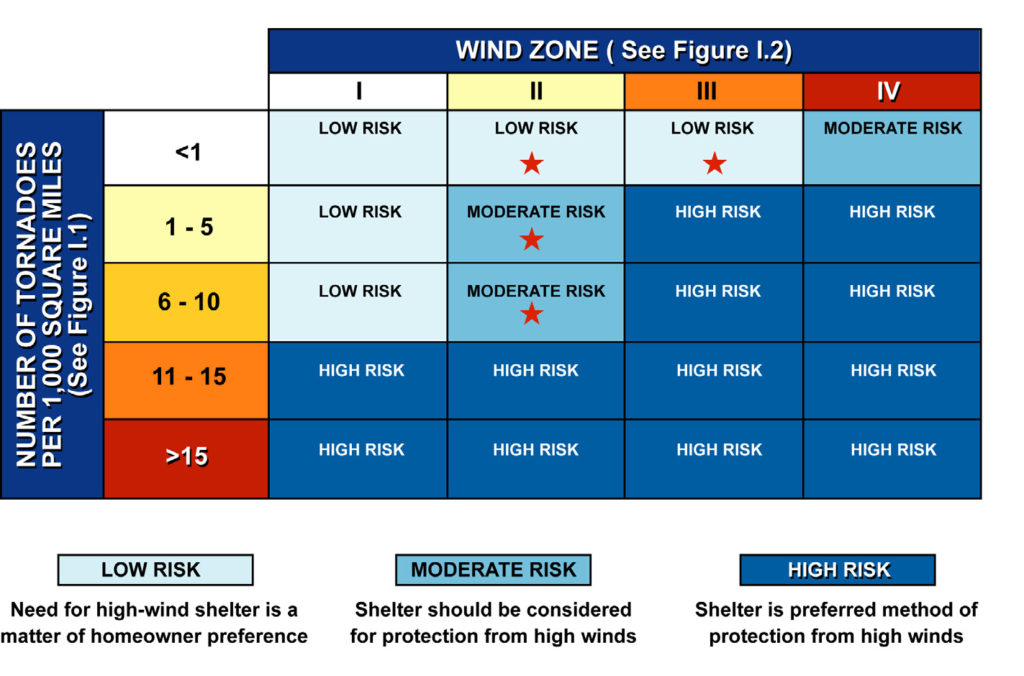Wind Zones in the United States

To complete the worksheet on the back of this page, refer to the tornado and wind zone maps on pages 3 and 6 (Figures I.1 and I.2). Using the map on page 3, note how many tornadoes were recorded per 1,000 square miles for the area where you live. Find the row on the worksheet that matches that number. Next, look at the map on page 6 and note the wind zone (I, II, III, or IV) in which you live. Find the matching column on the worksheet. Finally, find the box inside the worksheet that lines up with both the number of tornadoes per 1,000 square miles in your area and your wind zone. The color of that box tells you the level of your risk from extreme winds and helps you decide whether to build a shelter.





